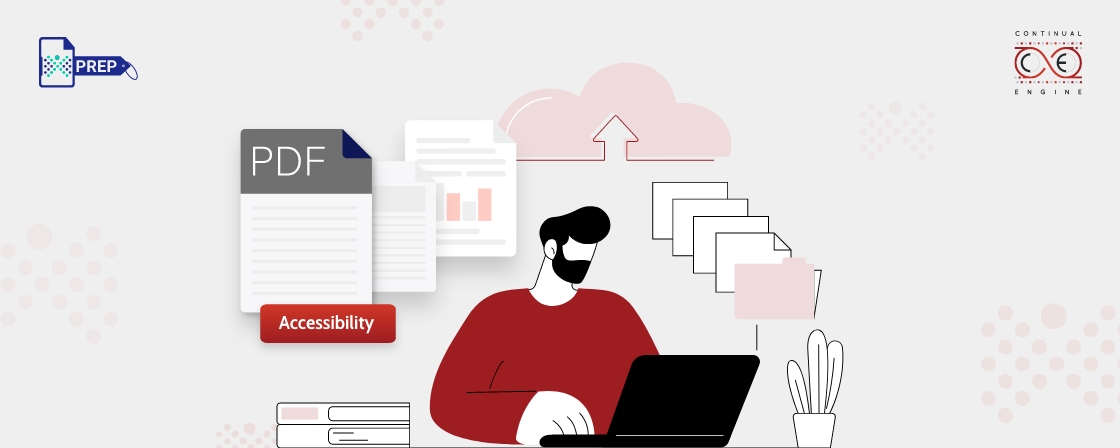What is a PDF/E File?
What are the Main Objectives of PDF/E Files?
- Maintains accuracy in drawings and dimensions
- Reduces file sizes for easier sharing
- Supports mark-up without altering original files
- Works across different software and operating systems
- Makes technical data more accessible and reliable
What Are PDF/E Files Used For?
-
Sharing Blueprints and Engineering Drawings
Construction blueprints, electrical schematics, and CAD files are frequently shared in PDF format, which maintains layout and detail.
-
Distributing and Preserving Technical Documents
It guarantees that engineering documentation can be readily kept or shared between teams without distortion by offering a common, standardized format.
-
Reducing File Size
Large design files are compressed by PDF/E without sacrificing quality, which facilitates cloud or email sharing.
-
Simplifying Review & Mark-Up
Throughout the review process, mark-up and review teams can annotate and add comments without modifying the original file structure.
-
Engineering Content Archiving
The self-contained and structured nature of PDF/E files makes them perfect for storing and retrieving design and engineering data over an extended period.
-
Inter-Platform Interoperability
PDF/E files, in contrast to native CAD files, appear uniformly on all platforms and devices, regardless of the program used to open them.
-
Enhancing Coordination
Because you can check PDF/E files without AutoCAD or other comparable software, coordination and communication with various stakeholders have become easier and more affordable.
Who Uses PDF/E?
- Architects: Use for distributing, building designs, renderings, and project timelines across teams.
- Civil Engineers: Take Help in sharing and reviewing construction plans, site layouts, and survey results.
- Manufacturers and Producers: Use product design, machinery layouts, and instruction manuals for clarity and accuracy.
- Government Agencies: Use for city planning, permits, and public infrastructure documentation that requires accurate records.
- Construction Professionals: Simplifies collaboration on-site and helps track changes in design documents.
- Interior Designers: Share interior layouts, material selections, and mood boards precisely.
What Are the Different Types of PDF/E?
-
PDF/E-1
The original ISO-standardized format, PDF/E-1, supports 2D vector graphics and text. It’s widely used for technical documents that don’t require 3D models or complex scripting.
-
PDF/E-2 (In Development)
This version aims to support 3D content, digital signatures, and JavaScript-based actions. While not yet finalized, it’s expected to enhance interactivity and automation.
PDF/E vs Regular PDF: What’s the Difference?
While both formats fall under the PDF umbrella, here’s how PDF/E stands out:
| Feature | Regular PDF | PDF/E |
|---|---|---|
| Target Use | General document sharing | Engineering & technical docs |
| File Size Optimization | Optional | Prioritized |
| CAD Compatibility | Limited | High |
| Layer Support | Minimal | Extensive |
| Mark-up Features | Basic | Advanced (without altering file) |
| Cross-Platform Consistency | Good | Excellent |
How to Use PREP to Make Accessible PDF/E Files
You can create accessible and compliant PDF/E files with PREP in no time! Here’s how you can do it in just a few simple and quick steps:
-
Upload Your PDF
Start by uploading your technical documents, such as a CAD file, blueprint, or instruction manual, into the PREP platform.
-
Detect Technical Elements
PREP will auto-detect essential engineering features like vector graphics, layers, and annotations that are critical to your workflow.
-
Embed Fonts and Graphics
PREP ensures that fonts, line styles, and graphic elements are embedded correctly so your design stays consistent everywhere.
-
Validate Drawing Layouts
It checks if your layouts, schematics, and scale drawings retain their structure and precision during conversion.
-
Generate Your PDF/E File
Once all elements are validated, PREP will export a fully compliant PDF/E-1 file, ready for archiving, sharing, or review.
Want to streamline your engineering workflows? Create accessible PDFs with PREP.
PDF/E is a powerful document format that bridges the gap between technical accuracy and universal accessibility. Whether you are an architect sharing blueprints or a manufacturer distributing spec sheets, PDF/E ensures your content is clear, consistent, and compliant without requiring expensive design software.
For businesses and teams dealing with large volumes of technical documents, tools like PREP make it even easier to maintain standards, accessibility, and efficiency.
FAQs
-
What happens if I open a PDF/E file in a regular PDF reader?
It will still open, but advanced features like layering or annotations may not be fully supported.
-
Is PDF/E the same as PDF/A or PDF/X?
No, PDF/E is optimized for engineering and design, while PDF/A is for archiving, and PDF/X is for printing.
-
Can I convert regular PDF to PDF/E?
Yes, with tools like PREP, you can convert and validate documents for PDF/E compliance.
-
Why is accessibility important in PDF/E?
Accessible documents ensure that technical information is usable by people with disabilities, improving compliance and inclusion.
